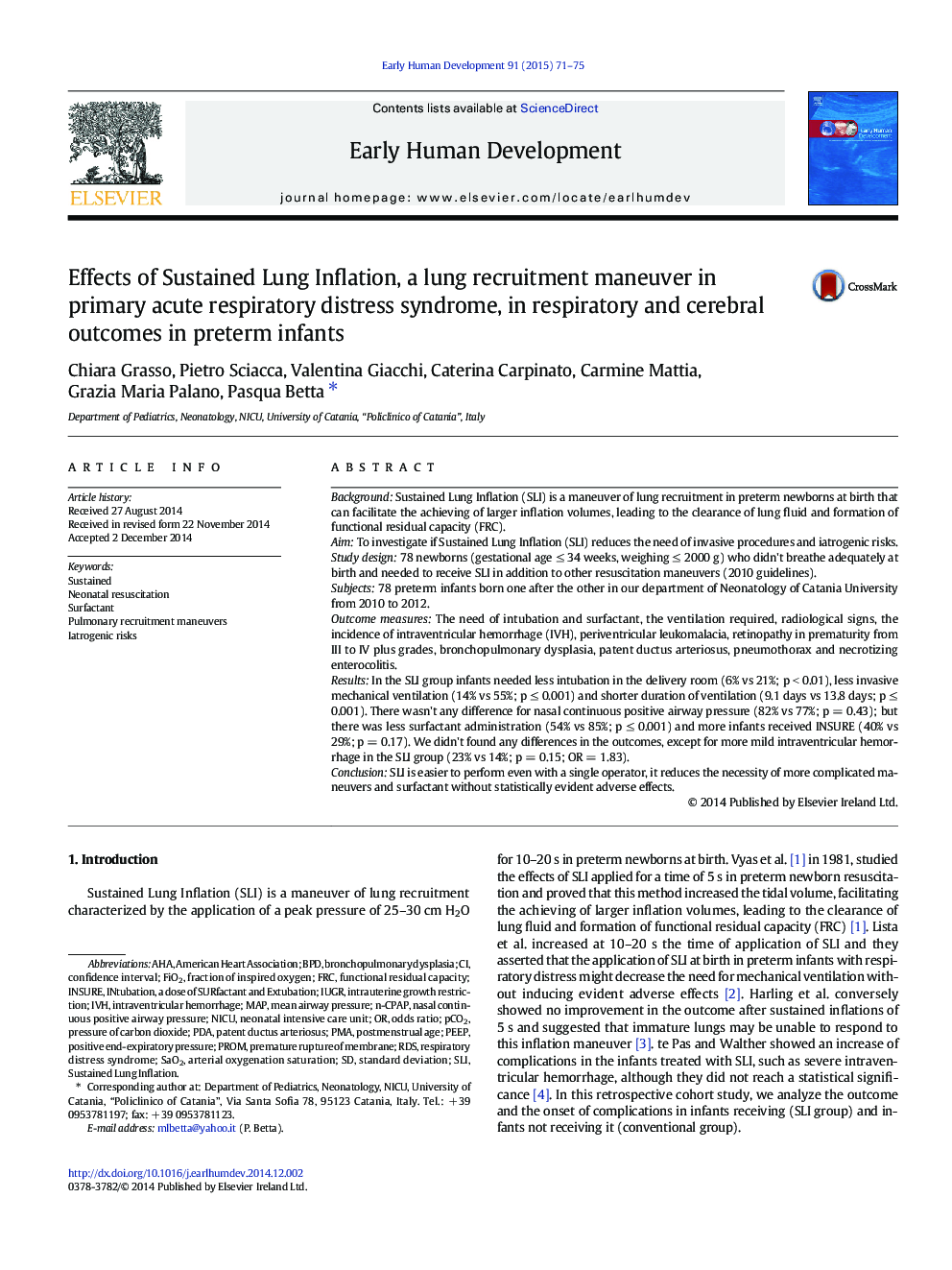| Article ID | Journal | Published Year | Pages | File Type |
|---|---|---|---|---|
| 3917959 | Early Human Development | 2015 | 5 Pages |
•Sustained Lung Inflation (SLI): in preterms at birth gets larger inflation volumes.•Does SLI reduce needs of invasive procedures and iatrogenic risks?•Focus on respiratory and cerebral outcomes in preterms•SLI group needed less intubation less and shorter duration of ventilation.•No significant differences in cerebral outcomes
BackgroundSustained Lung Inflation (SLI) is a maneuver of lung recruitment in preterm newborns at birth that can facilitate the achieving of larger inflation volumes, leading to the clearance of lung fluid and formation of functional residual capacity (FRC).AimTo investigate if Sustained Lung Inflation (SLI) reduces the need of invasive procedures and iatrogenic risks.Study design78 newborns (gestational age ≤ 34 weeks, weighing ≤ 2000 g) who didn't breathe adequately at birth and needed to receive SLI in addition to other resuscitation maneuvers (2010 guidelines).Subjects78 preterm infants born one after the other in our department of Neonatology of Catania University from 2010 to 2012.Outcome measuresThe need of intubation and surfactant, the ventilation required, radiological signs, the incidence of intraventricular hemorrhage (IVH), periventricular leukomalacia, retinopathy in prematurity from III to IV plus grades, bronchopulmonary dysplasia, patent ductus arteriosus, pneumothorax and necrotizing enterocolitis.ResultsIn the SLI group infants needed less intubation in the delivery room (6% vs 21%; p < 0.01), less invasive mechanical ventilation (14% vs 55%; p ≤ 0.001) and shorter duration of ventilation (9.1 days vs 13.8 days; p ≤ 0.001). There wasn't any difference for nasal continuous positive airway pressure (82% vs 77%; p = 0.43); but there was less surfactant administration (54% vs 85%; p ≤ 0.001) and more infants received INSURE (40% vs 29%; p = 0.17). We didn't found any differences in the outcomes, except for more mild intraventricular hemorrhage in the SLI group (23% vs 14%; p = 0.15; OR = 1.83).ConclusionSLI is easier to perform even with a single operator, it reduces the necessity of more complicated maneuvers and surfactant without statistically evident adverse effects.
